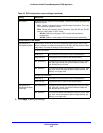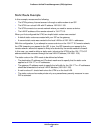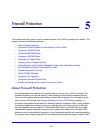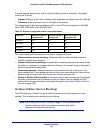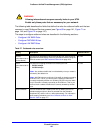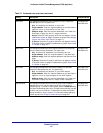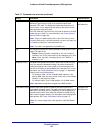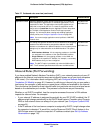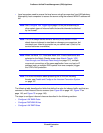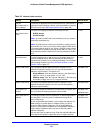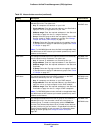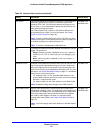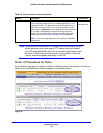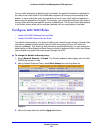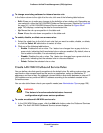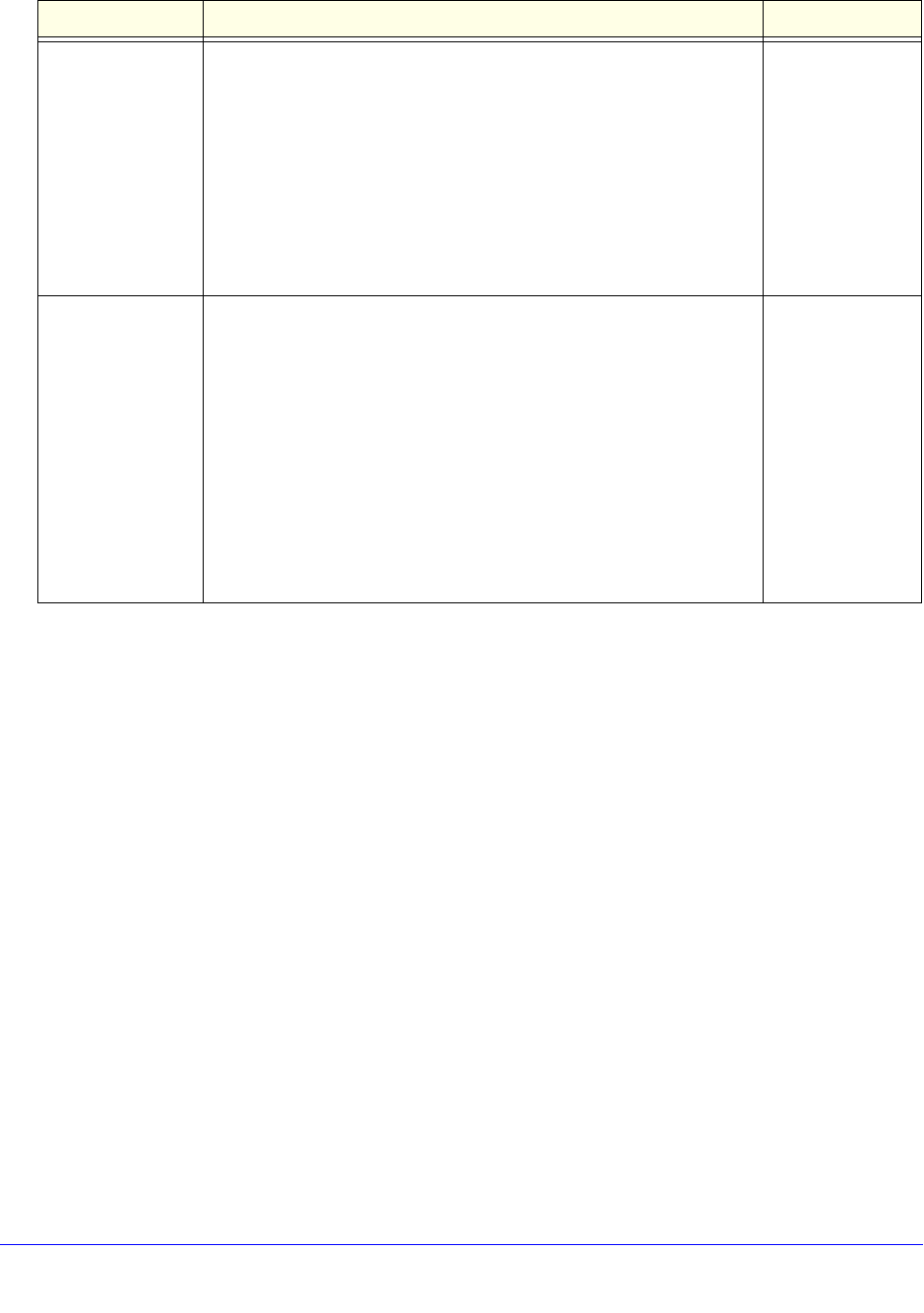
Firewall Protection
133
ProSecure Unified Threat Management (UTM) Appliance
Inbound Rules (Port Forwarding)
If you have enabled Network Address Translation (NAT), your network presents only one IP
address to the Internet, and outside users cannot directly access any of your local computers
(LAN users). (For information about configuring NAT, see Configure Network Address
Translation (All Models) on page 81.) However, by defining an inbound rule you can make a
local server (for example, a web server or game server) visible and available to the Internet.
The rule informs the firewall to direct inbound traffic for a particular service to one local server
based on the destination port number. This process is also known as port forwarding.
Whether or not DHCP is enabled, how the computer accesses the server’s LAN address
impacts the inbound rules. For example:
• If your external IP address is assigned dynamically by your ISP (DHCP enabled), the IP
address might change periodically as the DHCP lease expires. Consider using Dynamic
DNS so that external users can always find your network (see Configure Dynamic DNS
on page 91).
• If the IP address of the local server computer is assigned by DHCP, it might change when
the computer is rebooted. To avoid this, use the Reserved (DHCP Client) feature in the
LAN Groups screen to keep the computer’s IP address constant (see Set Up Address
Reservation on page 116).
Application Control Select an application control profile to allow, block, or log traffic for
entire categories of applications, for individual applications, or for a
combination of both. The application control profile applies only to
traffic that is covered by this rule. To create an application control
profile, select + Create New from the Application Control drop-down
list. The Add or Edit Application Control Profile pop-up screen
displays. For information about creating and enabling application
control profiles, see Configure Application Control on page 240.
Note: You cannot assign application control profiles to LAN DMZ
firewall rules.
LAN WAN rules
DMZ WAN rule
NAT IP The setting that specifies whether the source address of the outgoing
packets on the WAN should be assigned the address of the WAN
interface or the address of a different interface. You can specify these
settings only for outbound traffic on the WAN interface. The options
are:
• WAN Interface Address. All the outgoing packets on the WAN
are assigned to the address of the specified WAN interface.
• Single Address. All the outgoing packets on the WAN are
assigned to the specified IP address, for example, a secondary
WAN address that you have configured.
Note: The NAT IP option is available only when the WAN mode is
NAT. The IP address specified should fall under the WAN subnet.
LAN WAN rules
DMZ WAN rule
Table 27. Outbound rules overview (continued)
Setting Description Outbound Rules



